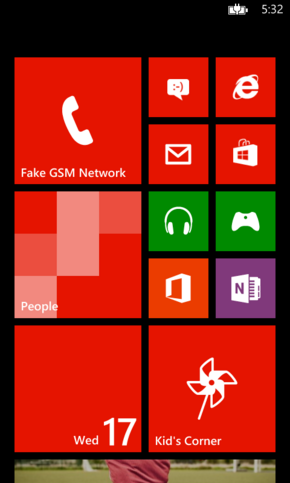Build list legend
Non-existent page
| Version of Microsoft Windows | |
 | |
| OS family | Windows NT |
|---|---|
| Version | 6.2 |
| Codename | Apollo (RTM) Portico (GDR1) |
| Architecture | ARM32 |
| Release date | 2012-10-29 |
| Support end | 2016-01-12 |
| Based on | |
| Windows 8 | |
| Replaces | |
| Windows Phone 7 | |
| Replaced by | |
| Windows Phone 8.1 | |
Windows Phone 8 (codenamed Apollo) is a version of the Windows Phone mobile operating system.
It is the first version of Windows Phone to be based on the NT kernel rather than Windows CE, with the OS now being developed as a version of Windows 8 in concurrency with it, although early builds of the operating system were still based on the CE kernel instead due to MobileCore not being ready at the time.
Windows Phone uses a unique versioning and numbering scheme. Due to this, the base build that a build of Windows Phone is based on is stated on its respective page.
Windows Phone 8 builds were usually compiled by wpbldlab, otherwise known as Windows Phone Build Lab.
Windows Phone 8, unlike its predecessors, is the first version of the Windows Phone OS family to replace the aging Windows CE core with the Windows NT codebase, allowing development to be synchronized with mainline Windows releases. The replacement allowed the operating system to support standards such as the NTFS filesystem, microSDHC memory cards and the UEFI firmware specification. Performance and functionality improvements such as multi-threading support, increased display resolution capabilities, and BitLocker Drive Encryption, were additionally introduced.
As Windows Phone 7-based devices were not capable of upgrading to Windows Phone 8 due to the significant codebase shift and the complexity of the work required to make such an upgrade possible, aspects of the Windows Phone 8 user interface were backported to its predecessor in the form of a major update intended to support legacy devices, dubbed Windows Phone 7.8.
Windows Phone 8 adds native support for the Media Transfer Protocol, allowing content to be transferred to and from portable devices. Additional data transfer software required by Windows Phone 7, specifically the Zune companion application, is no longer required.
Windows Phone 8 introduces a new feature called "Kid's Corner", a similar counterpart to the "Guest" user account on Windows. The owner of the phone can choose which applications and games appear in Kid's Corner, which, once the application is active, are the only applications and games that can be opened until the app is closed. This feature allows the owner to set up a sort of sandbox, where no outside data can be touched by other people or as indicated by the app's name, children.
The Rooms feature allowed users to contact each other inside of a group chat, and additionally further supported viewing Facebook and Twitter posts. Members of the group could also share messages and photos from within that room, which only other members of that room could view.
A new mode called "Driving Mode" was introduced in Windows Phone 8 Update 3. When connected to a car via Bluetooth, the phone activates "Driving Mode", a specialized UI designed for easier use when driving.
Data Sense is a feature that enables users to set data usage limits on mobile networks based on their plan. Data Sense can also restrict background data usage when the user is near their set limit.
On Windows Phone 8 devices with NFC, data transfer between NFC-enabled devices is now possible. In certain countries and on some carriers, the phone was also able to be used as a credit and debit card via the Wallet application using this feature.
As of Windows Phone 8 Update 3, applications can now be closed in the task view menu.
Windows Phone 8 is stored on 3 individual partitions:
EFIESP, which initiates the booting process;MainOS, which contains the OS itself;Data, which stores user data and installed applications.Windows Phone 8 updates were distributed via Windows Update as packages in the following extensions:
.spkg, as a full package;.spku, as an update package containing PA30 delta compressed files that can be applied on top of a specific previous build;.spkr, as a removal package.Despite this, updates were usually only distributed via Delta packages, and as a result require the user to have a specific build installed prior to updating.[a]
When rebooting to update, the OS reboots into a special mode designated for installing updates named UpdateOS.
Windows Phone 8 and later versions of Windows Phone utilize an image system which consists of six different image types:
Test ReleaseType specification.Build list legend
delta_patch.py